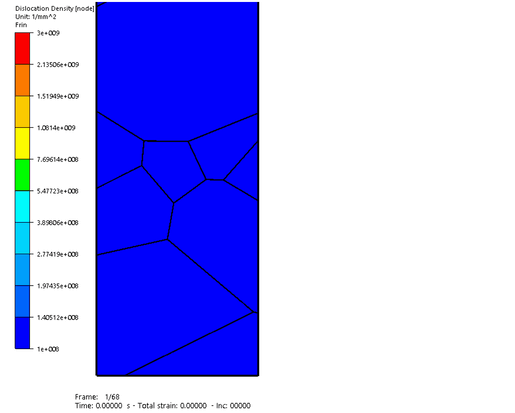Modeling metal forming processes requires a predictive understanding of flow behavior and microstructure evolution. DIGIMU® is a powerful tool for predicting grain size evolution during industrial processes. DIGIMU® integrates for several years physical modules for grain growth, Smith-Zener Pinning, discontinuous dynamic, post-dynamic, and static recrystallization. Recent developments enhance its capabilities, now simulating second-phase particles evolution and continuous dynamic recrystallization (CDRX).
Coupled Simulations of Particles and Grain Size Evolutions
DIGIMU® now allows for the simulation of two distinct particle populations. Simulations illustrate particle nucleation, growth, dissolution, and Ostwald ripening phenomena. The LS formulation describes particles' presence accurately, predicting particle fractions and their impact on grain size. The model has been applied to nickel alloys heat treatments with delta or γ' phase precipitation. Its accuracy has been demonstrated by the alignment of simulated particle fractions and grain sizes with experimental measurements.
Continuous Dynamic Recrystallization (CDRX) Framework
For high stacking fault energy materials like zirconium or aluminum alloys, a new CDRX model is implemented DIGIMU®. Based on the renowned Gourdet-Montheillet mean field model, this is the first available CDRX model at the polycrystal scale. It considers subgrains formation and their evolution during dynamic and post dynamic recrystallization. The model has been identified for zirconium alloys applications, showing good agreement with experimental observations.

Continuous Dynamic Recrystallization (CDRX) in zirconium alloy, followed by the Post Dynamic evolution of the structure and the substructure during the dissolution of a precipitate population (P. De Micheli, V. Grand, M. Bernacki, ESAFORM 2024)
Conclusion
DIGIMU®'s advancements in simulating particles evolution and CDRX enhance its capabilities for studying various materials and processes. Future studies will explore these features for other nickel-based alloys, zircaloys, and aluminum alloys, offering a comprehensive tool for microstructure prediction in industrial processes.
Source image: MSR, CEMEF, MINES ParisTech





